
1.1 The Coordinate Plane
1. Find the coordinates of the points shown in the figure.
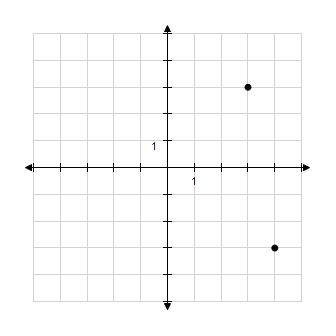
a. (4, – 3), (3, 3)
b. (– 4, 3), (3, – 3)
c. (4, 3), (3, 3)
d. (4, – 3), (– 3, 3)
e. (4, – 3), (3, – 3)
ANSWER: a
2. Find the distance between the points (3, –4) and (9, 4).
a. 64
b. 6
c. 10
d. 10
e. 100
ANSWER: d
3. For the points (5, 3) and (2, 5):
(a) Find the distance between them.
(b) Find the midpoint of the line segment that joins them.
a. (a) The distance is .
(b) The midpoint is .

b. (a) The distance is 13.
1.1 The Coordinate Plane
(b) The midpoint is

c. (a) The distance is (b) The midpoint is (7, 4).
d. (a) The distance is 13. (b) The midpoint is (7, 4).
e. (a) The distance is 13.
(b) The midpoint is .
ANSWER: a

4. Find the midpoint of the segment joining the points (5, –6) and (11, 2).
a. (–2, –4)
b. (–2, 8)
c. (–4, –10)
d. (8, –2)
e. (–10, –2)
ANSWER: d
5. Find the midpoint of the segment that joins the points (6, 0) and (0, 14).
a. (3, 6)
b. (3, 7)
c. (3, 8)
d. (7, 3)
e. (6, 7)
ANSWER: b
6. A pair of points is graphed.
1.1 The Coordinate Plane

Find the midpoint of the segment that joins them.
a. (3, 0)
b. (1, 3)
c. (2, 3)
d. (1, 2)
e. (2, 2) ANSWER: c
7. Draw the square with vertices A(1, 1) , B(4, 1) , C(4, 4) , and D(1, 4) on a coordinate plane. Find the area of the square. a.

The area is 9.

The area is 3.

The area is 9.

The area is 3.
1.1 The Coordinate Plane
e.

The area is 12.
ANSWER: c
8. A rectangle has the vertices of A(2, 5), B(4, 5), C(2, 0), and D(4, 0) on a coordinate plane. Find the area of the rectangle.
a. 9
b. 14
c. 10
d. 11
e. 6
ANSWER: c
9. The parallelogram has the vertices of A(2, 1), B(8, 1), C(9, 4), and D(3, 4) on a coordinate plane. Find the area of the parallelogram.
a. 17
b. 18
c. 20
d. 16
e. 19
ANSWER: b
10. If the points P(6, 2), Q(0, 8), and R(–6, 2) are drawn on a coordinate plane, where must the point S be located so that the figure PQRS is a square?
a. (0, –4)
b. (–6, 0)
c. (0, –3)
d. (–4, 0)
e. (0, –5)
ANSWER: a
1.1 The Coordinate Plane
11. Determine which of the points (– 5, 0), (5, 20), and (–, ) are on the graph of the equation x 2 + y 2 = 25
a. (5, 20), (–, )
b. (– 5, 0), (–, )
c. (– 5, 0), (5, 20), (–, )
d. (– 5, 0), (5, 20)
e. None
ANSWER: b
12. Determine the sketch of the region given by the set {(x, y) | x ≤ 4}. a. b. c. d.


e.

ANSWER: d


13. Determine the sketch of the region given by the set {(x, y) | x ≥ 4 and y < 1}.
1.1 The Coordinate Plane


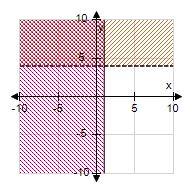
ANSWER: c


14. Determine the sketch of the region given by the set {(x, y) | –1 < x < 1 and y ≥ 4}.
1.1 The Coordinate Plane
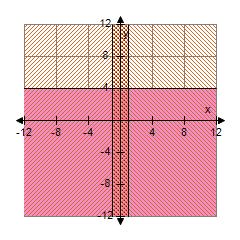


ANSWER: b

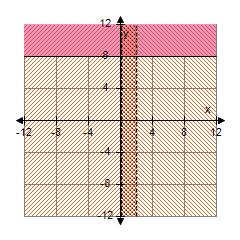
15. Determine which point A(7, 8) or B(6, 9) is closer to the origin?
a. Point A(7, 8) is closer to the origin.
b. Point B(6, 9) is closer to the origin.
ANSWER: a
1.1 The Coordinate Plane
16. Find the area of the triangle shown in the figure. Round to the closest positive whole number.

a. 12
b. 15
c. 17
d. 18
e. 13
ANSWER: b
17. Find a point on the y-axis that is equidistant from the points (2, –9) and (7, 0).
a. (0, 0)
b. (0, 5)
c. (–2, 0)
d. (0, –4)
e. (0, –2)
ANSWER: e
18. Find the point that is one-fourth of the distance from the point P(–1, 5) to the point Q(3, 17) along the segment PQ.
a. (0, –8)
b. (2, 11)
c. (0, 8)
d. (8, 0)
e. (0, 0)
ANSWER: c
1.1 The Coordinate Plane
19. If the points P(–7, –7), Q(–6, –3), and R(2, 8) are plotted on a coordinate plane, where should the point S be located so that the figure PQRS is a parallelogram?
a. (2, 4)
b. (1, 2)
c. (1, 4)
d. (4, 0)
e. (0, 5)
ANSWER: c
20. If M(9, 7) is the midpoint of the line segment AB, and if A has coordinates (5, 5), find the coordinates of B
a. (–13, 9)
b. (13, 9)
c. (–5, –1)
d. (–11, –8)
e. (13, –9)
ANSWER: b
21. The parallelogram has vertices of A (–5, –1), B (1, 1), C (4, 9), and D (–2, 7). Find the midpoints of the diagonals of this parallelogram.
a. (0, 3.5) , (–0.5, 4)
b. (0, 3.5) , (0, 3.5)
c. (0, –0.5) , (0, –0.5)
d. (1, 0) , (–1, 0)
e. (–0.5, 4) , (–0.5, 4)
ANSWER: e
22. A city has streets that run north and south, and avenues that run east and west, all equally spaced. Streets and avenues are numbered sequentially, as shown in the figure. The walking distance between points A and B is 7 blocks; that is, 4 blocks east and 3 blocks north. To find the straight-line distance d, we must use the Distance Formula.
1.1 The Coordinate Plane


Find the walking distance and the straight-line distance between the corner of 4th St. and 2nd Ave. and the corner of 19th St. and 38th Ave.
a. The walking distance is 51 blocks and the straight-line distance is 40 blocks.
b. The walking distance is 50 blocks and the straight-line distance is 39 blocks.
c. The walking distance is 53 blocks and the straight-line distance is 41 blocks.
d. The walking distance is 50 blocks and the straight-line distance is 40 blocks.
e. The walking distance is 51 blocks and the straight-line distance is 39 blocks.
ANSWER: e
23. Find the distance between (–2, 7) and (1, 11).
ANSWER: 5
24. A rectangle has vertices of A(5, 5), B(11, 5), C(5, 2), and D(11, 2) on a coordinate plane. Find the area of the rectangle.
ANSWER: 18
25. Find the area of the triangle shown in the figure.
1.1

ANSWER: 24.5
26. Find the midpoint of the segment joining the points (5, –9) and (7, –5). ANSWER: (6, –7)
27. Find the midpoint of the segment that joins the points (2, 0) and (0, 6).
ANSWER: (1, 3)
28. The parallelogram has the vertices of A(4, 4), B(8, 4), C(10, 6), and D(6, 6) on a coordinate plane. Find the area of the parallelogram.
ANSWER: 8
29. Find a point on the y-axis that is equidistant from the points (4, –8) and (7, 3). ANSWER: (0, –1)
30. Find the point that is one-fourth of the distance from the point P(–2, 5) to the point Q(6, 13) along the segment PQ ANSWER: (0, 7)
31. The points P(–8, –9), Q(4, –3), and R(11, 4) are on a coordinate plane. Where should the point S be located so that the figure PQRS is a parallelogram?
ANSWER: (–1, –2)
32. If M (7, 7) is the midpoint of the line segment AB, and if A has coordinates (5, 3), find the coordinates of B ANSWER: (9, 11)
33. The parallelogram has vertices of A (–1, –1), B (4, 1), C (9, 8), and D (4, 6). Find the midpoints of the diagonals of this parallelogram.
ANSWER: (4, 3.5); (4, 3.5)
1.1 The Coordinate Plane
34. A pair of points is graphed.

Find the distance between them.
Find the midpoint of the segment that joins them. ANSWER: 10; (1, 0)
35. Which of the points A(6, 7) or B(5, 8) is closer to the origin, Point A or B? ANSWER: A
1.2 Graphs of Equations in Two Variables
1. Determine which point is on the graph of the equation y = 5x + 9.
a. (4, 28)
b. (5, 9)
c. (1, 27)
d. (4, 29)
e. (3, 29)
ANSWER: d
2. Calculate the y-coordinates in the table below for the function
1.2 Graphs of Equations in Two Variables
3.

1.2 Graphs of Equations in Two Variables
ANSWER: e
4. Fill the table of values for the function .
ANSWER: c
1.2 Graphs of Equations in Two Variables
5. Fill in the table of values for the function y = | x – 2 | . x y –6 ? –2 ? 1 ? 3 ? 7 ?
ANSWER: e

6. Fill in the table of values for the function . x y –3 ? –2 ? 1 ? 2 ? 3 ?
1.2 Graphs of Equations in Two Variables

1.2 Graphs of Equations in Two Variables
ANSWER: a
8. An equation and its graph are given. Find the x-intercepts.


a. 0
b. 0, 5
c. 5
d. 0, 2
e. 2
ANSWER: d
1.2 Graphs of Equations in Two Variables
9. Find the x - and y-intercepts of the graph of the equation





ANSWER: d

10. Find the x- and y-intercepts of the graph of the equation . a.





ANSWER: e
11. Find the x and y - intercepts of the graph of .
a. x - intercepts , y - intercepts
b. x - intercepts , y - intercepts
c. x - intercept , y - intercepts
d. x - intercept , y - intercept
e. x - intercepts , y - intercepts


ANSWER: b
12. Determine which of the points (– 4, 0), (2, 14), and (–, ) are on the graph of the equation x 2 + y 2 = 16
1.2 Graphs of Equations in Two Variables
a. (2, 14), (–, )
b. (– 4, 0), (–, )
c. (– 4, 0), (2, 14), (–,
d. (– 4, 0), (2, 14)
e. None
ANSWER: b
13. Test the equation for symmetry.

a. The symmetry is around the x-axis.
b. The symmetry is around the y-axis.
c. The symmetry is around the point (5, 5).
d. The symmetry is around the origin.
e. There is no symmetry.
ANSWER: d
14. Test the equation for symmetry to determine the correct graph.

a. origin- symmetry

b. x-axis symmetry
Copyright Cengage Learning. Powered by Cognero.
1.2 Graphs of Equations in Two Variables

c. x-axis symmetry

d. y-axis symmetry
1.2 Graphs of Equations in Two Variables

e. none
ANSWER: c
15. A satellite is in orbit around a planet. A coordinate plane containing the orbit is set up with the center of the planet at the origin, as shown in the graph, with distances measured in megameters (Mm). The equation of the satellite's orbit is


There are two points in the orbit with y-coordinates equal to 2. Find the x-coordinates of these points. Please round the answers to two decimal places.
a. 7.31, –1.35
b. 7.29, –1.29
c. 7.33, –1.33
d. 7.33, –1.35
e. 7.31, –1.33
ANSWER: c
16. Find the x- and y-intercepts of the graph of the equation .
Copyright Cengage Learning. Powered by Cognero.
1.2 Graphs of Equations in Two Variables
x-intercept =
y-intercept = ANSWER: ; 7

17. Find the x- and y-intercepts of the graph of the equation ANSWER:


18. An equation and its graph are given.


Find the x-intercepts.
x =
Find the y-intercepts.
y = ANSWER: 0, 1; 0
19. A satellite is in orbit around a planet. A coordinate plane containing the orbit is set up with the center of the planet at the origin, as shown in the graph, with distances measured in megameters (Mm). The equation of the satellite's orbit is

Copyright Cengage Learning. Powered by Cognero.
1.2 Graphs of Equations in Two Variables

Round your answers to two decimal places when necessary.
From the graph, determine the closest that the satellite gets to the center of the planet.
Mm
From the graph, determine the furthest that the satellite gets from the center of the planet.
Mm
There are two points in the orbit with y-coordinates equal to 4. Find the x-coordinates of these points.
Determine their distances to the center of the planet.
ANSWER: 4; 16; 14.66; -2.66; 15.16; 4.80
Determine which points are on the graphs of the given equations.
Match each point below with the letter of the corresponding equation.



20. ANSWER: b

21. ANSWER: c

22. ANSWER: a
Test each of the equations for symmetry.
Match each description below with the letter of the corresponding equation.
1.2 Graphs of Equations in Two Variables



23. symmetry about x-axis ANSWER: b
24. symmetry about y-axis ANSWER: a
25. symmetry about the origin ANSWER: c
1.3 Circles
1. Find the center and radius of the circle with the equation of

a. center ( 2, 0 ), radius 4
b. center ( –2, 0 ), radius 4
c. center ( –2, 0 ), radius 2
d. center ( 0, 2 ), radius 4
e. center ( –2, 0 ), radius 5
ANSWER: c
2. Find the center and radius of the circle for the equation of

a. center (–1, –1), radius 4
b. center (–1, 1), radius 2
c. center (–1, 0), radius 2
d. center (1, –1), radius 4
e. center (1, 1), radius 2
ANSWER: e
3. Find the center and radius of the circle with the equation a. b. c. d.





e.

ANSWER: e
4. Determine the graph of the equation

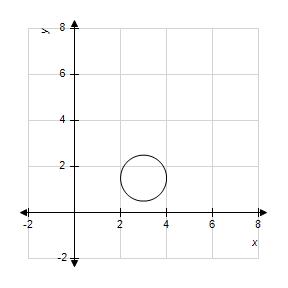




1.3 Circles
ANSWER: b
5. The endpoints of a diameter of a circle are P(1, 4) and Q(4, 7). Find the equation of the circle.




e.

ANSWER: e
6. Find an equation of the circle with the center at (–3, 4) and a radius of 1.




e.

ANSWER: c
7. Find the equation of the circle with center and radius .




e. ANSWER: c


8. Find the equation of the circle with center and tangent to the x - axis.




1.3 Circles
e.

ANSWER: c


9. Find the area of the region that lies outside of the circle but inside of the circle to two decimal places.
a. 172.79
b. 183.79
c. 182.79
d. 173.79
e. 175.79
ANSWER: a
10. Determine whether the equation represents a circle, a point, or has no graph. If the equation is that of a circle, find its center and radius.


a. center , radius

b. center , radius 4

c. center , radius
d. point

e. no graph
ANSWER: a

11. Determine what form the given equation represents.

a. The equation represents a single point.
b. The equation represents an ellipse.
c. The equation represents an empty set.
d. The equation represents a circle.
e. The equation represents a semi-circle with a curve approaching the positive x-axis.
ANSWER: a


12. Find the area of the region that lies outside of the circle but inside of the circle .
Round your answer to two decimal places.
ANSWER: 25.13
Find the equations of the circles that satisfy the given conditions.
1.3 Circles
Match each equation below with the letter of the corresponding condition set.
a. center (-2 , 2), radius 1
b. center (1 , -2), radius 2
c. center (1 , 0), radius 3

13. ANSWER: a

14. ANSWER: c

15. ANSWER: b
Find the equations of the circles that satisfy the given conditions.
Match each equation below with the letter of the corresponding condition set.
a. Endpoints of a diameter are P(3, 0), and Q(5, 4)
b. Endpoints of a diameter are P(2, 0), and Q(6, 7)
c. Endpoints of a diameter are P(4, 5), and Q(9, -5)

16. ANSWER: c

17. ANSWER: a

18. ANSWER: b
Determine whether each of the following equations represents a circle, a single point, or the empty set.
Match each item below with the letter of the corresponding equation. a. b.



1.3 Circles
19. empty set
ANSWER: b
20. single point ANSWER: c
21. circle ANSWER: a
Lines
1. Find the slope of the line through P(–4, –3) and Q(3, 4).
a. m = –4
b. m = 1
c. m = 2
d. m = 4
e. m = 7
ANSWER: b
2. Find the slope of the line through P(–8, 6) and Q(–7, 11).
a. m = 4
b. m = 7
c. m = 6
d. m = 3
e. m = 5
ANSWER: e
3. Determine the slope of the line which is sketched below.

a. m = –9
b. m = –3
c. m = 2
d. m = –1
e. m = –4
ANSWER: e
4. Determine the correct sketch of the line through (3, –14) with a slope of 7.

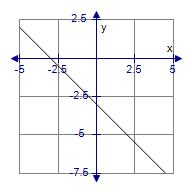
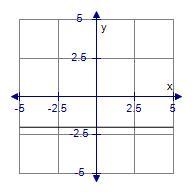
ANSWER: b


5. Determine the correct equation for the line whose graph is sketched below.
1.4 Lines

a. y = –4x – 32
b. y = 4x – 32
c.

d. y = 4x – 32
e. y = –4x + 32
ANSWER: e
6. Determine the correct equation for the line whose graph is sketched below.

a. y = –6x + 36
b. y = 6x – 36
c. y = 6x + 36
1.4 Lines

e. y = –6x – 36
ANSWER: b
7. Determine the correct equation for the line passing through the point (–5, –14) with a slope of 3.
a. y = –3x – 1
b. y = –3x + 1
c. y = 3x + 1
d. y = 3x – 1
e.

ANSWER: c
8. Determine the correct equation for the line passing through the point (1, 8) with a slope of 5.
a. y = –3x – 5
b. y = 5x + 3
c.

d. y = 3x + 5
e. y = –5x + 3
ANSWER: b
9. Determine the correct equation for the line passing through the point (3, 16) and the point (17, 3).
a. 14y + 13x – 263 = 0
b. 14y – 13x – 263 = 0
c. 14y + 13x + 263 = 0
d. 14y – 13x + 263 = 0
e. none of these
ANSWER: a
10. Determine the correct equation for the line with a slope of 6 and a y-intercept of –4.
a.

b. y = –6x + 4
c.

d. y = 6x – 4
e. y = 6x + 4
ANSWER: d
1.4 Lines
11. Determine the correct equation for the line with an x-intercept of –2 and a y-intercept of 8.
a. y = –4x + 8
b. y = 4x – 8
c. y = 4x + 8
d.

e.

ANSWER: c
12. Determine the correct equation for the line passing through the point (4, –4) and parallel to the line x + 2y = 10.
a.

b. y = 2x – 2
c. d.


e. y = 2x + 2
ANSWER: a
13. Find an equation for the line that passes through the point (6, 3) and is perpendicular to the line x – 3y + 26 = 0.
a.

b. y = 3x + 18
c. y = 21 – 3x
d. y = x + 6
e.

ANSWER: c
14. Write the equation for the line passing through the point (10, 6) which is perpendicular to the line y = –11.
a. y = –10
b. y = 11
c. x = 9
d. y = 12
e. x = 10
1.4 Lines
ANSWER: e
15. Determine the correct equation for the line passing through the point (2, 3) which is parallel to the line passing through both of the points (6, 7) and (–2, 71).
a. y = –8x – 19
b.

c.

d. y = –8x + 19
e.

ANSWER: d
16. Use a graphing device to graph the given family of lines in the same viewing rectangle.
y = mx + 1, for m = 0, ±0.25, ±0.75, ±1.5





ANSWER: b
17. Find the slope and y-intercept for the line x + y = 6 and draw its graph.
m = –2, y = 0 b. m = –1, y = 0

m = 2, y = 0


m = 1, y = 6 e. m = –1, y = 6


ANSWER: e
18. Find the slope and the y-intercept of the line and draw its graph.
a. m = 1, y-intercept = 12


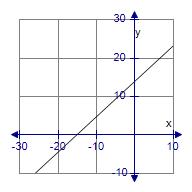


b. m = –1, y-intercept = 0



1.4 Lines

ANSWER: e
19. Find the slope and the y-intercept of the line 7y + 35 = 0 and sketch its graph.
a. m = 0, y-intercept is 5
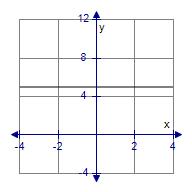
c. m = 0, y-intercept is 10

e. m = –5, y-intercept is 0
b. m = 5, y-intercept is 0
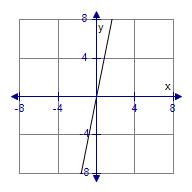
d. m = 0, y-intercept is –5

1.4 Lines

ANSWER: d
20. Determine the correct area from the triangle formed by the coordinate axes and the line 10x + 12y – 120 = 0
a. a = 60
b. a = 59
c. a = 61
d. a = 62
e. a = 58
ANSWER: a
21. The relationship between the Fahrenheit (F) and Celsius (C) temperature scales is given by the equation:

Find the Celsius temperature corresponding to F = 95º.
a. C = 34º
b. C = 35º
c. C = 37º
d. C = 33º
e. C = 36º
ANSWER: b
22. At the surface of the ocean, the water pressure is the same as the air pressure above the water, 4.48 lb/in.2 Below the surface, the water pressure increases by 21 lb/in.2 for every 10 feet of descent.
Determine the correct equation for the relationship between pressure (P) and depth (d) below the ocean surface where pressure is in lb/in.2 and depth is in feet.
a. P = 0.448d + 21
b. P = 0.348d – 21
c. P = 0.348d + 21
d. P = –0.448d – 21
1.4 Lines
e. P = –0.448d + 21
ANSWER: a
23. Find the slope of the line through P(6, –1) and Q(7, 1).
m = ANSWER: 2
24. Find the slope of the line sketched in the graph.

m =
ANSWER: –7
25. Find the area of the triangle formed by the coordinate axes and the line 4x + 6y – 24 = 0. ANSWER: 12
26. Find the slope and the y-intercept of the line slope = y-intercept = ANSWER: ; 12

27. Find the slope and the y-intercept of the line 3y + 3 = 0.
ANSWER: 0; –1
28. Find an equation for the line whose graph is sketched below.

ANSWER: y = –5x + 10
29. Find an equation for the line whose graph is sketched below.

ANSWER: y = 3x – 6
30. Write an equation for the line through the point (–6, –33) which has a slope of 7.
ANSWER: y = 7x + 9
31. Write an equation for the line passing through the point (–1, 2) and the point (3, –4).
ANSWER: 3x + 2y – 1 = 0
32. Write an equation for the line with a slope of 3 and a y-intercept of –4.
ANSWER: y = 3x – 4
33. Write an equation for the line with an x-intercept of –2 and a y-intercept of 16.
1.4 Lines
ANSWER: y = 8x + 16
34. Write the equation for the line passing through the point (20, –12) and parallel to the line x + 4y = 12.
ANSWER:

35. Write the equation for the line passing through the point (7, 7) which is perpendicular to the line y = 9.
ANSWER: x = 7
36. Write the equation for the line passing through the point (4, 10) which is parallel to the line passing through both of the points (5, 2) and (–4, 65).
ANSWER: y = –7x + 38
37. At the surface of the ocean, the water pressure is the same as the air pressure above the water, 11 lb/in.2 Below the surface, the water pressure increases by 4.12 lb/in.2 for every 10 feet of descent.
Find an equation for the relationship between pressure (P) and depth (d) below the ocean surface where pressure is in lb/in.2 and depth is in feet.
ANSWER: P = 0.412d + 11
Find the slope of the line through P and Q by matching each value of P and Q below with the corresponding slope. Match each slope below with the letter of the corresponding coordinates.
a. P(-6, -7) and Q(-1, -12)
b. P(-4, -6) and Q(-2, -2)
c. P(-7, -8) and Q(0, -36)
d. P(-5, -5) and Q(-1, 11)
38. m = -1
ANSWER: a
39. m = 4
ANSWER: d
40. m = -4
ANSWER: c
41. m = 2
ANSWER: b
Match each equation below with the letter of the corresponding description.
a. The line is through point (0, 2) with a slope of 7.
b. The line is through point (-1, 11) with a slope of -7.
c. The line is through point (4, 32) with a slope of 9.
1.4 Lines
d. The line is through point (1, -9) with a slope of -6.
42. y = -7x + 4
ANSWER: b
43. y = -6x – 3
ANSWER: d
44. y = 7x + 2
ANSWER: a
45. y = 9x – 4
ANSWER: c
1.5 Solving Quadratic Equations
1. Solve the equation.
(t - 5) 2 = (t + 5) 2 + 40
a. - 5
b. 5
c. - 8
d. 2
e. - 2
ANSWER: e
2. Find all real solutions of the equation x 2 - 81 = 0.
a. x = 9, x = - 9
b. x = 40.5, x = - 40.5
c. x = 9, x = - 81
d. x = 81, x = - 9
e. x = 81, x = - 81
ANSWER: a
3. Find all real solutions of the equation 10x 2 - 160 = 0.
a. x = 8, x = - 8

b. x = , x =

c. x = 16, x = - 16
d. x = 10, x = - 10
e. x = 4, x = - 4
ANSWER: e
4. Find all real solutions of the equation (x + 9) 2 = 4.
a. x = - 7, x = - 11
b. x = 2, x = - 2
c. x = 7, x = 11
d. x = - 2, x = - 2
e. x = - 11, x = 11
ANSWER: a
5. Solve the equation.
(t - 4) 2 = (t + 4) 2 + 80
ANSWER: –5
6. Find all real solutions of the equation.
1.5 Solving Quadratic Equations
x 2 - 64 = 0
ANSWER: 8; -8
7. Find all real solutions of the equation.
7x 2 - 7 = 0
ANSWER: 1; -1
8. Find all real solutions of the equation.
(x + 4) 2 = 4
ANSWER: –2; –6
9. Solve the equation by factoring.





e. none of these ANSWER: a
10. Solve the equation by factoring.

a. x = –35, x = –30
b. x = 35, x = –30
c. x = 35, x = 30
d. x = –35, x = –60
e. none of these ANSWER: b
11. Solve the equation by completing the square.

a. x = 7, x = 1
b. x = –7, x = –2
1.5 Solving Quadratic Equations
c. x = –7, x = –1
d. x = 7, x = –1
e. none of these ANSWER: d
12. Solve the equation by completing the square.

a. x = –8, x = 5
b. x = 8, x = –5
c. x = 8, x = 5
d. x = –8, x = –5
e. none of these ANSWER: d

13. Solve the equation by completing the square. a.



e. none of these ANSWER: c
14. Find all real solutions of the equation.
4x 2 + 7x - 36 = 0




Copyright Cengage Learning. Powered by Cognero.
1.5 Solving Quadratic Equations
e. none of these ANSWER: a







15. Find all real solutions of the equation. a. b. c. , d. , e. none of these ANSWER: b

16. Find all real solutions of the equation. a.




e. None of these ANSWER: a
17. Find all real solutions of the equation
ax 2 - (2a + 1)x + (a + 1) = 0, for a = 5. a.

1.5 Solving Quadratic Equations



e. none of these
ANSWER: a
18. Use the quadratic formula and a calculator to find all real solutions of the equation, correct to three decimal places.

a. x = 0.827, x = 3.294
b. x = –0.827, x = –3.294
c. x = –0.827, x = 3.294
d. x = 0.827, x = –3.294
e. none of these
ANSWER: c
19. Use the discriminant to determine the number of real solutions of the equation.
x 2 - 5.17x + 3.29 = 0
Do not solve the equation.
a. no real solutions
b. exactly one real solution
c. two real solutions
d. more than two real solutions
e. none of these
ANSWER: c
20. Find all values of k that ensure that the equation has exactly one solution.
4x 2 + kx + 4 = 0
a. k = 16, k = –16
b. k = 8, k = –8
c. k = 8, k < –8
d. k = –8, k > 8
e. none of these
ANSWER: b
21. Find two numbers whose sum is 37 and whose product is 322.
Copyright Cengage Learning. Powered by Cognero.
1.5 Solving Quadratic Equations
a. 14, 23
b. 13, 24
c. 14, 18
d. 15, 22
e. none of these ANSWER: a
22. A farmer has a rectangular garden plot surrounded by 220 feet of fence. Find the length and width of the garden if its area is 2,800 feet 2
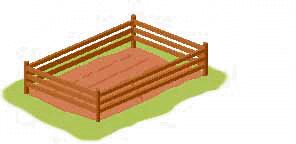
a. width = 60, length = 50
b. width = 70, length = 40
c. width = 60, length = 30
d. width = 65, length = 45
e. none of these
ANSWER: b
23. Find the length x if the shaded area is 3,000 cm 2 and y = 20 cm.

a. 70 cm
b. 80 cm
c. 60 cm
d. 50 cm
e. none of these ANSWER: c
Copyright Cengage Learning. Powered by Cognero.
1.5 Solving Quadratic Equations
24. A box with a square base and no top is to be made from a square piece of cardboard by cutting y in. squares from each corner and folding up the sides, as shown in the figure. The box is to hold 484 in 3 What is the length of the starting piece of cardboard, if y = 4 in?

a. 24 in
b. 21 in
c. 19 in
d. 18 in
e. none of these ANSWER: c
25. A wire 210 in. long is cut into two pieces. One piece is formed into a square and the other into a circle. If the two figures have the same area, what are the lengths of the two pieces of wire to the nearest tenth of an inch?
a. 66.8 in. and 143.2 in.
b. 170.5 in. and 39.5 in.
c. 111.3 in. and 98.7 in.
d. 115.5 in. and 94.5 in.
e. none of these ANSWER: c
26. It took a crew 4 h 48 min to row 4.4 km upstream and back again. If the rate of flow of the stream was 5 km/h, what was the rowing rate of the crew in still water?
a. 9 km/h
b. 6 km/h
c. 10 km/h
d. 8 km/h
e. none of these ANSWER: b
27. A box with a square base and no top is to be made from a square piece of cardboard by cutting y inch squares from each corner and folding up the sides, as shown in the figure. The box is to hold 245 in 3 . How big a piece of cardboard is needed if y = 5 inches?
1.5 Solving Quadratic Equations

Give the length (in inches) of the starting piece of cardboard.
inches
ANSWER: 17
28. Use the discriminant to determine the number of real solutions of the equation. Do not solve the equation.
x 2 - 5.15x + 3.39 = 0
ANSWER: 2
29. It took a crew 4 h 48 min to row 10.8 km upstream and back again. If the rate of flow of the stream was 3 km/h, what was the rowing rate of the crew in still water?
km/h
ANSWER: 6
30. Solve the equation by factoring.

ANSWER:

31. Solve the equation by factoring.

ANSWER:
32. Solve the equation by completing the square.

ANSWER:
33. Solve the equation by completing the square.

ANSWER:
34. Solve the equation by completing the square.
1.5 Solving Quadratic Equations

ANSWER:

35. Find all real solutions of the equation.
4x 2 + 19x - 30 = 0
ANSWER:

36. Find all real solutions of the equation.

ANSWER:

37. Find all real solutions of the equation.

ANSWER:

38. Use the quadratic formula and a calculator to find all real solutions of the equation, correct to three decimal places.

ANSWER:
39. Find all values of k that ensure that the equation has exactly one solution.
16x 2 + kx + 4 = 0
ANSWER:
40. Find two numbers whose sum is 31 and whose product is 238.
ANSWER: 14, 17
41. A farmer has a rectangular garden plot surrounded by 260 feet of fence. Find the length and width of the garden if its area is 3,000 feet 2
1.5 Solving Quadratic Equations

ANSWER: 100, 30
42. Find the length x if the shaded area is 6,300 cm 2 and y = 13 cm.

ANSWER: x=100
43. A wire 400 in. long is cut into two pieces. One piece is formed into a square and the other into a circle. If the two figures have the same area, what are the lengths of the two pieces of wire to the nearest tenth of an inch?
ANSWER: 212.1, 187.9
1.6 Complex Numbers
1. Find the real and imaginary part of the complex number 3 – 5i .
a. Real part = 3, Imaginary part = – 5.
b. Real part = 3, Imaginary part = – 5i.
c. Real part = – 5, Imaginary part = 3.
d. Real part = 5i, Imaginary part = 3.
e. none of these ANSWER: a
2. Find the real and imaginary parts of the complex number.
8
a. Real part 8, imaginary part 8
b. Real part 0, imaginary part 8
c. Real part 8, imaginary part 0 ANSWER: c
3. Find the real and imaginary part of the complex number


a. Real part = , Imaginary part =


b. Real part = , Imaginary part =


c. Real part = , Imaginary part =

d. Real part = 12, Imaginary part = – 7
e. none of these ANSWER: b
4. Evaluate the expression (11 + 14i) + (16 – 2i) and write the result in the form a + bi
a. 27 – 12i
b. 27 + 12i
c. 12 + 27i
d. 11 + 14i
e. none of these ANSWER: b
5. Evaluate the expression 2( – 3 + 8i) and write the result in the form a + bi.
a. – 6 + 16i
b. 6 – 16i
c. – 16 – 6i
d. – 16 + 6i
1.6 Complex Numbers
e. none of these ANSWER: a
6. Evaluate the expression (4 + 4i)(11 – 10i) and write the result in the form a + bi.
a. – 4 – 84i
b. 84 + 4i
c. 4 + 84i
d. 44 + 44i
e. none of these ANSWER: b
7. Evaluate the expression and write the result in the form a + bi .
a. 9 + 8i
b. – 8 – 9i
c. 9 – 2i
d. 8 + 9i
e. none of these ANSWER: a

8. Evaluate the expression and write the result in the form a + bi .
a. 6 + 2i
b. – 2 – 6i
c. 6 – 2i
d. 2 + 6i
e. none of these ANSWER: a

9. Evaluate the expression and write the result in the form a + bi
a. 54 – 12i
b. 9 – 2i
c. – 9 + 2i
d. 2 – 9i
e. none of these ANSWER: b


10. Evaluate the expression and write the result in the form a + bi .
1.6 Complex Numbers
a. – 6 – 20i
b. 20 – 6i
c. 20 + 6i
d. 6 – 20i
e. none of these ANSWER: b
11. Evaluate the expression i7 and write the result in the form a + bi
a. - i
b. – ( - i )
c. 1
d. –1
e. none of these ANSWER: a
12. Evaluate the expression i52 and write the result in the form a + bi
a. – ( 1 )
b. – i
c. 1
d. i
e. none of these ANSWER: c
13. Evaluate the expression and write the result in the form a + bi
a. 6i
b. – 6
c. – 6i
d. 6
e. none of these ANSWER: a

14. Evaluate the expression and write the result in the form a + bi
a. – 32
b. 32i
c. – 32i
d. 32
e. none of these ANSWER: a

1.6 Complex Numbers
15. Evaluate the expression and write the result in the form a + bi .
a. 52 + 90i
b. – 16 + 90i
c. 90 – 52i
d. 36 + 96i
e. none of these ANSWER: a

16. Evaluate the expression and write the result in the form a + bi .
a. –

b. –7i
c. –i
d. i


e. none of these ANSWER: c

17. Find all solutions of the equation and express them in the form a + bi
a. x = 5i, x = – 5
b. x = 5, x = – 5
c. x = 5i, x = – 5i
d. x = 5i
e. none of these ANSWER: c

18. Find all solutions of the equation and express them in the form a + bi
a. x = 4 + 2i, x = 4 – 2i
b. x = 2 + 5i, x = 2 – 5i
c. x = 4, x = –4
d. x = 16 + 8i, x = 16 – 8i
e. No solutions
ANSWER: a

19. Find all solutions of the equation and express them in the form a + bi
a. x = 12 + 8i, x = 12 – 8i
b. x = 3 + 2i, x = 3 – 2i

1.6 Complex Numbers
c. x = 3, x = – 3
d. x = 2 + 4i, x = 2 – 4i
e. No solutions
ANSWER: b
20. Find all solutions of the equation and express them in the form a + bi .
a. z = – 8 + 12i, z = – 8 – 12i
b. z = 3 + 3i, z = 3 – 3i
c. z = – 2 + 3i, z = – 2 – 3i
d. z = 2, z = – 2
e. No solutions
ANSWER: c

21. Evaluate the expression and write the result in the form a + bi ANSWER: –1

22. Evaluate the expression and write the result in the form a + bi ANSWER: –63
23. Evaluate the expression and write the result in the form a + bi.

ANSWER: 5
24. Perform the subtraction and write the result in the form a + bi

ANSWER: 1 – 3i
25. Perform the subtraction and write the result in the form a + bi.
(0.3 – 1.5i) – (1.2 – 3.6i) ANSWER: –0.9+2.1i
26. Evaluate the expression (6 + 19i) + (13 - 12i) and write the result in the form a + bi. ANSWER: 19 + 7 i
27. Evaluate the expression 15( – 5 + 11i) and write the result in the form a + bi. ANSWER: –75 + 165 i
28. Evaluate the expression (7 + 5i)(4 - 2i) and write the result in the form a + bi.
1.6 Complex Numbers
ANSWER: 38 + 6 i

29. Evaluate the expression and write the result in the form a + bi Round a and b to the nearest whole number, if necessary.
ANSWER: 23 + 14 i
30. Evaluate the expression and write the result in the form a + bi
ANSWER: 9 + 5 i

31. Evaluate the expression and write the result in the form a + bi.

ANSWER:

32. Evaluate the expression and write the result in the form a + bi.

ANSWER:

33. Evaluate the expression and write the result in the form a + bi
ANSWER: 8 – 9i

34. Evaluate the expression and write the result in the form a + bi.

ANSWER: 5 + 3i
35. Evaluate the expression and write the result in the form a + bi .
ANSWER: 3 – 13 i

36. Evaluate the expression and write the result in the form a + bi .
ANSWER: -i
37. Evaluate the expression and write the result in the form a + bi .
ANSWER: 3 · i

1.6 Complex Numbers

38. Evaluate the expression and write the result in the form a + bi . ANSWER: 80 + 15 · i

39. Evaluate the expression and write the result in the form a + bi .
ANSWER:

40. Find all solutions of the equation and express them in the form a + bi
ANSWER: i, –i

41. Find all solutions of the equation and express them in the form a + bi .
ANSWER: 4 + i, 4 – i

42. Find all solutions of the equation and express them in the form a + bi .
ANSWER: 2 + 4i, 2 – 4i


43. Find all solutions of the equation and express them in the form a + bi .
ANSWER: –3 + i, –3 – i
44. Find all solutions of the equation and express them in the form a + bi

ANSWER:

45. Find all solutions of the equation and express them in the form a + bi

ANSWER:

46. Find all solutions of the equation and express them in the form a + bi

ANSWER:

47. Find all solutions of the equation and express them in the form a + bi

1.6 Complex Numbers
ANSWER:
Find the real and imaginary part of the complex number 4 - 2i . Match each lettered word with the corresponding number below.
Choose the correct letter for the numbered questions below.
a. Real part
b. Imaginary part
48. 4 ANSWER: a
49. –2 ANSWER: b
Find the real and imaginary part of the complex number

Match each lettered word with the corresponding number below.
Choose the correct letter for the numbered questions below.
a. Real part
b. Imaginary part

50. ANSWER: b

51. ANSWER: a
1.7 Solving Other Types of Equations
1. Determine whether the given value is a solution of the equation.

a. no
b. yes
ANSWER: a
2. Determine whether the given value is a solution of the equation.

a. no
b. yes
ANSWER: b
3. Solve the equation.
2x - 1 = 3x + 6
a. 5
b. 6
c. - 7
d. - 5
e. 7
ANSWER: c
4. Solve the equation.
- 7w + 16 = - 15w
a. 2
b. 3
c. - 2
d. 16
e. - 3
ANSWER: c
5. Solve the equation.

a. 4
b. 350
c. - 50
1.7 Solving Other Types of Equations
d. 70
e. 10
ANSWER: b
6. Solve the equation.
4(x + 6) + 1 = - 5(x + 6) + 10
a. 9
b. - 5
c. - 11
d. 4
e. 5
ANSWER: b

7. Solve the equation. a. b. c. d.

e.
ANSWER: c
8. Solve the equation.

a. 8
b. - 24
c. - 12
d. - 8
e. 24
ANSWER: d
9. Solve the equation.
1.7 Solving Other Types of Equations

a. - 10
b. 9
c. 1
d. 100
e. 10
ANSWER: c
10. Solve the equation.

a. - 6
b. - 9
c. 9
d. 6
e. 7
ANSWER: d
11. Solve the equation.

a. 80
b. - 81
c. 81
d. 72
e. - 72
ANSWER: b
12. Solve the equation.

a. 13
b. 14
c. 18
d. 15
e. 3
1.7 Solving Other Types of Equations
ANSWER: b
13. Find all real solutions of the equation (x - 5) 3 + 64 = 0.
a. x = - 5
b. x = - 4
c. x = 9
d. x = - 1
e. x = 1
ANSWER: e
14. Find all real solutions of the equation .


ANSWER: c
15. Find all real solutions of the equation 4x 2/3 - 16 = 0.
a. x = 8, x = - 8
b. x = 6, x = 4
c. x = 4
d. x = 6
e. x = 8
ANSWER: a
16. Find the solution of the equation 8.75 - x = 8.41x + 6.39. Round your answer to two decimal places.
a. 2.91
b. 1.27
c. 0.73
d. 0.25
e. 1.91
ANSWER: d
17. Solve the equation P = 8l + 5w for l a. b.


1.7 Solving Other Types of Equations



ANSWER: d
18. Solve the equation.
8x - 8 = 9x + 1
ANSWER: -9
19. Solve the equation.
- 6w + 36 = - 12w
ANSWER: -6
20. Solve the equation.

ANSWER: 63
21. Solve the equation.
2(x + 7) + 2 = - 5(x + 3) + 3
ANSWER: –4
22. Solve the equation.
(t - 4) 2 = (t + 4) 2 + 80
ANSWER: –5
23. Solve the equation.

ANSWER: 6
24. Solve the equation.

ANSWER: 6
25. Solve the equation.
1.7 Solving Other Types of Equations

ANSWER: 5
26. Solve the equation.

ANSWER: –12
27. Solve the equation.

ANSWER: 15
28. Find all real solutions of the equation.
(x - 2) 3 + 125 = 0
ANSWER: –3
29. Find all real solutions of the equation.

ANSWER: 64
30. Find the solution of the equation. Round your answer to two decimal places.
3.61 - x = 5.48x + 6.19
ANSWER: –0.40
31. Determine whether the given value is a solution of the equation. Answer yes or no

ANSWER: no
32. Determine whether the given value is a solution of the equation. Answer yes or no.

ANSWER: no
33. Solve the equation.

1.7 Solving Other Types of Equations
ANSWER:

34. Find all real solutions of the equation.
2x 2/3 - 50 = 0
ANSWER: 125, -125,
For the equation P = 7l + 2w, match each indicated variable below with the corresponding solution when you solve the equation for that variable.
Choose the correct letter for the numbered questions below.

ANSWER: b

36. ANSWER: a
37. Find all real solutions of the equation.
x 3-5x 2+4x=0
a. 0, 6, 7
b. 1, 4
c. 6, 7
d. 0, 6, 4
e. 0, 1, 4
ANSWER: e
38. Find all real solutions of the equation.
x 3-6x 2+x-6=x 2+1
a. 7
b. 7, 3
c. 8
d. 8, 3
e. - 4
ANSWER: a
39. Find all solutions, real and complex, of the equation.
1.7 Solving Other Types of Equations






ANSWER: c
40. Solve the equation for the variable x. The constant c represents a positive real number.


b. c. d. e. ANSWER: b




41. Find all real solutions of the equation.
x 4 = 49x 2
a. x = 0, x = 49
b. x = 0, x = 7, x = –7
c. x = 0, x = 49, x = –49
d. x = 0
e. none of these
Copyright Cengage Learning. Powered by Cognero.
1.7 Solving Other Types of Equations
ANSWER: b
42. Find all real solutions of the equation.
x 5 = 27x 2
a. x = 0
b. x = 0, x = 27
c. x = 0, x = 3, x = –3
d. x = 0, x = 3
e. none of these ANSWER: d
43. Find all real solutions of the equation.

a. x = 0, x = 5
b. x = 0, x = –45
c. x = 1, x = 5
d. x = 2, x = 10
e. none of these ANSWER: c
44. Find all real solutions of the equation.

a. x = 0, x = –3
b. x = 16, x = –12
c. x = 4, x = –3
d. x = 0, x = –1
e. none of these ANSWER: c
45. Find all real solutions of the equation.

a. x = 6, x = 30
b. x = 0, x = –36
c. x = 0, x = 30
d. x = 24, x = 120
1.7 Solving Other Types of Equations
e. none of these ANSWER: a
46. Find all real solutions of the equation.
(x + 3 ) 2 - 9( x + 3 ) + 18 = 0
a. x = 0, x = 6
b. x = 0, x = –3
c. x = 0, x = 3
d. x = 0, x = –4
e. none of these ANSWER: c
47. Find all real solutions of the equation.

a. - 6
b. 0, 6
c. 6, - 6
d. 2
e. none of these ANSWER: a
48. Find all real solutions of the equation.

a. 0, 64
b. ±64, ±125
c. 64, 125
d. ±4, ±5
e. none of these ANSWER: b
49. Find all real solutions of the equation.

a. x = –1, x = 16
b. x = –1, x = –16
c. x = 1, x = –16
1.7 Solving Other Types of Equations
d. x = 1, x = 16
e. none of these
ANSWER: d
50. Find all real solutions of the equation.

a. x = –16, x = –4
b. x = –16, x = 4
c. x = 16, x = –4
d. x = 16, x = 4
e. none of these
ANSWER: d
51. Find all real solutions of the equation.

a. 0, 9
b. –1, 0
c. –9
d. 9
e. 0
ANSWER: d
52. Find all real solutions of the equation.

a. x = –42, x = –25
b. x = 12
c. x = 16
d. x = 21, x = 12
e. x = –21, x = 12
ANSWER: b
53. Find all solutions, real and complex, of the equation.
x 3 = 125
a.
x = 5, x = , x =


b. x = 5, x = –5
c. x = 5
Copyright Cengage Learning. Powered by Cognero.
1.7 Solving Other Types of Equations

d. x = 5, x = , x =

e. none of these
ANSWER: a
54. A social club charters a bus at a cost of $630 to take a group of members on an excursion. At the last minute, 5 people in the group decide not to go. This raises the transportation cost per person by $3. How many people originally intended to take the trip?
a. 40 people
b. 31 people
c. 41 people
d. 35 people
e. 30 people
ANSWER: d

55. A large pond is stocked with fish. The fish population P is modeled by the formula , where t is the number of days since the fish were first introduced into the pond. How many days will it take for the fish population to reach 312?
a. 10 days
b. 6 days
c. 9 days
d. 3 days
e. 18 days
ANSWER: c
56. A large plywood box has a volume of 864 ft 3 Its length is a ft greater than its height, and its width is b ft less than its height. What is the height of the box if a = 7 and b = 3?

a. 8 feet
b. 9 feet
c. 10 feet
d. 4 feet
e. 18 feet
Copyright Cengage Learning. Powered by Cognero.
1.7 Solving Other Types of Equations
ANSWER: b
57. A jeweler has three small solid spheres made of gold, of radius 1 mm, 3 mm, and 4 mm. He decides to melt these down and make just one sphere out of them. What will the radius of this larger sphere be?
a. 5.10 mm
b. 18.91 mm
c. 4.51 mm
d. 56.73 mm
e. 8.00 mm
ANSWER: c
58. Grain is falling from a chute onto the ground, forming a conical pile whose diameter is always three times its height. How high is the pile to the nearest hundredth of a foot when it contains 2,400 ft 3 of grain?

a. 31.92 feet
b. 6.34 feet
c. 10.06 feet
d. 14.51 feet
e. 9.28 feet
ANSWER: c
59. A spherical tank has a capacity of 550 gallons. Using the fact that one gallon is about 0.1337 ft 3 , find the radius of the tank. Round your answer to the nearest hundredth of a foot.
a. 5.59 feet
b. 6.16 feet
c. 2.60 feet
d. 5.08 feet
e. 4.19 feet
ANSWER: c
60. A city lot has the shape of a right triangle whose hypotenuse is 25 ft longer than one of the other sides. The perimeter of the lot is 300 ft. How long is the hypotenuse of the lot?
a. 125 feet
Copyright Cengage Learning. Powered by Cognero.
1.7 Solving Other Types of Equations
b. 75 feet
c. 100 feet
d. 62.5 feet
e. 250 feet
ANSWER: a
61. Find all real solutions of the equation.

ANSWER: 2
62. Find all real solutions of the equation.

ANSWER: 9
63. Find all real solutions of the equation.

ANSWER: –3
64. A social club charters a bus at a cost of $1,400 to take a group of members on an excursion. At the last minute, 5 people in the group decide not to go. This raises the transportation cost per person by $5. How many people originally intended to take the trip?
people
ANSWER: 40

65. A large pond is stocked with fish. The fish population P is modeled by the formula , where t is the number of days since the fish were first introduced into the pond. How many days will it take for the fish population to reach 204?
days
ANSWER: 16
66. A large plywood box has a volume of 540 ft 3 . Its length is a ft greater than its height, and its width is b ft less than its height. What is the height of the box if a = 3 and b = 4?
1.7 Solving Other Types of Equations

feet
ANSWER: 9
67. A jeweler has three small solid spheres made of gold, of radius 3 mm, 6 mm, and 8 mm. He decides to melt these down and make just one sphere out of them. What will the radius of this larger sphere be?
mm
ANSWER: 9.11
68. Grain is falling from a chute onto the ground, forming a conical pile whose diameter is always three times its height. How high is the pile to the nearest hundredth of a foot when it contains 1,000 ft 3 of grain?

feet
ANSWER: 7.52
69. A spherical tank has a capacity of 650 gallons. Using the fact that one gallon is about 0.1337 ft 3 , find the radius of the tank to the nearest hundredth of a foot.
feet
ANSWER: 2.75
70. A city lot has the shape of a right triangle whose hypotenuse is 36 ft longer than one of the other sides. The perimeter of the lot is 216 ft. How long is the hypotenuse of the lot?
feet
ANSWER: 90
1.7 Solving Other Types of Equations
71. Find all real solutions of the equation.

ANSWER:
72. Find all solutions, real and complex, of the equation.

ANSWER:

73. Solve the equation for the variable x The constant b represents a positive real number.

ANSWER:

74. Find all real solutions of the equation.
x 4 = 25x 2
ANSWER: 5,–5,0
75. Find all real solutions of the equation.
x 5 = 64x 2
ANSWER: 4,0
76. Find all real solutions of the equation.

ANSWER: 2,4
77. Find all real solutions of the equation.

ANSWER: 3,–2
78. Find all real solutions of the equation.

ANSWER: 8,56
79. Find all real solutions of the equation.
1.7 Solving Other Types of Equations
( x + 5 ) 2 - 8( x + 5 ) + 15 = 0
ANSWER: –2,0
80. Find all real solutions of the equation.

ANSWER:

81. Find all real solutions of the equation.

ANSWER: 27,125,–27,–125
82. Find all real solutions of the equation.

ANSWER: 81,16
83. Find all real solutions of the equation.

ANSWER: 4,16
84. Find all solutions, real and complex, of the equation. x 3 = 27
ANSWER:

1.8 Solving Inequalities
1. Solve the nonlinear inequality. Express the solution using interval notation and graph the solution set.
x 2 + x > 12
a. (-∞, -4) ∪ (4, ∞);

b. (-∞, -3) ∪ (4, ∞);

c. (-∞, -6) ∪ (3, ∞);

d. (-∞, -3) ∪ (3, ∞);

e. (-∞, -4) ∪ (3, ∞);

ANSWER: e
2. Solve the nonlinear inequality. Express the solution using interval notation and graph the solution set.
49x ≤ x 3
a. [-7, -1] ∪ [7, ∞);

1.8 Solving Inequalities
b.
[-9, 0] ∪ [9, ∞);

c.
[-10, 0] ∪ [10, ∞);
d.
[-8, 0] ∪ [8, ∞);
e.
[-7, 0] ∪ [7, ∞);
ANSWER: e




3. Solve the nonlinear inequality. Express the solution using interval notation and graph the solution set. a. ;






1.8 Solving Inequalities
d. ;


e. ;


ANSWER: e
4. Solve the nonlinear inequality. Express the solution using interval notation and graph the solution set.
x 4 > 25x 2
a.
(-∞, -1) ∪ (1, ∞);
b.
(-∞, -5) ∪ (0, ∞);


c.
(-∞, -6) ∪ (6, ∞);
d.
(-∞, 0) ∪ (1, ∞);


e.
(-∞, -5) ∪ (5, ∞);

ANSWER: e
5. Determine the values of the variable for which the expression is defined as a real number.
Copyright Cengage Learning. Powered by Cognero.
1.8 Solving Inequalities






ANSWER: c
6. In the vicinity of a bonfire, the temperature T in °C at a distance of x meters from the center of the fire was given by .


At what range of distances from the fire's center was the temperature less than 500°C?
a. More than 20 meters
b. More than 35 meters
c. More than 45 meters
d. More than 10 meters
e. More than 40 meters
ANSWER: e
7. A riverboat theater offers bus tours to groups on the following basis. Hiring the bus costs the group $360, to be shared equally by the group members. Theater tickets, normally $30 each, are discounted by 25 cents times the number of people in the group. How many members must be in the group so that the cost of the theater tour (bus fare plus theater ticket) is less than $39 per person?
a. at least 25 members
b. at least 12 members
c. at least 16 members
d. at least 24 members
e. at least 20 members
ANSWER: a
8. Solve the inequality. Express the solution using interval notation.
4x ≤ 16
1.8 Solving Inequalities
a. x ∈ (-∞, 9)
b. x ∈ (-4, ∞)
c. x ∈ (-∞, 4]
d. x ∈ (-∞, 4)
e. x ∈ (-∞, 9]
ANSWER: c
9. Solve the inequality. Express the solution using interval notation.
3x + 13 < 7
a. x ∈ (-∞, 3)
b. x ∈ (-∞, 2)
c. x ∈ (-2, ∞)
d. x ∈ (-∞, -2)
e. x ∈ (-∞, 13]
ANSWER: d
10. Solve the inequality. Express the solution using interval notation.
11 - 3x ≤ -13
a. x ∈ (-∞, 8)
b. x ∈ (-∞, 4]
c. x ∈ (-8, ∞)
d. x ∈ [8, ∞)
e. x ∈ (-∞, -4)
ANSWER: d
11. Solve the inequality. Express the solution using interval notation.
0 < 5 - 2x





ANSWER: b
Copyright Cengage Learning. Powered by Cognero.
1.8 Solving Inequalities
12. Solve the inequality. Express the solution using interval notation.
3 - x ≥ 3x + 7
a. x ∈ (-∞, 2)
b. x ∈ (-∞, -1]
c. x ∈ (-∞, -2)
d. x ∈ (-∞, -1)
e. x ∈ (-∞, 1)
ANSWER: b
13. Solve the inequality. Express the solution using interval notation.




ANSWER: e
14. Solve the inequality. Express the solution using interval notation.
6 ≤ x + 9 < 8
a. [6, 7)
b. [–3, –1)
c. [–7, –6)
d. [1, 3)
e. [–8, –1)
ANSWER: b
15. Solve the inequality. Express the solution using interval notation.
7 < 5x + 12 ≤ 32
a. (–1, 4]
b. (–1, 10]
c. (9, 9]
d. [–9, –9]
1.8 Solving Inequalities
e. [9, 10)
ANSWER: a
16. Solve the inequality. Express the solution using interval notation.
-25 ≤ 10 - 5x ≤ 20
a. [ -2, 7 )
b. [ -7, 2 ]
c. ( -2, 7 )
d. [ -2, 7 ]
e. [ -7, 2 )
ANSWER: d
17. Solve the inequality. Express the solution using interval notation.





e.

ANSWER: d
18. Determine the correct sketch of the area given by the inequality x 2 + y 2 - 4x - 4y < 8

a. b.

1.8
Inequalities
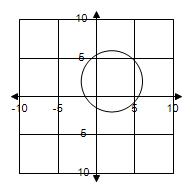

ANSWER: e

19. A car rental company offers two plans for renting a car.
Plan A: $30 per day and $0.20 per mile.
Plan B: $45 per day with free unlimited mileage. For what range of miles will plan B save you money?
a. Less than 160 mi
b. Less than 325 mi
c. More than 75 mi
d. More than 160 mi
e. Less than 75 mi
ANSWER: c
20. It is estimated that the annual cost of driving a certain new car is given by the formula C = 0.5m + 2,100,
where m represents the number of miles driven per year and C is the cost in dollars. Jane has purchased such a car, and decides to budget between $9,600 and $11,100 for next year's driving costs. What is the corresponding range of miles that she can drive her new car?
a. Between 14,000 mi and 16,000 mi
b. Between 14,000 mi and 18,000 mi
c. Between 15,000 mi and 18,000 mi
d. Between 15,000 mi and 16,000 mi
1.8 Solving Inequalities
e. More than 18,000 mi
ANSWER: c
21. Solve the inequality for x, assuming that p, b, and d are positive constants.






ANSWER: d
22. Let

Use substitution to determine which elements of S satisfy the inequality x + 5 ≥ 0. a.
b. 0
c. 7
d.

e. –5
ANSWER: a, b, c, d, e

23. Let .

Use substitution to determine which elements of S satisfy the inequality x - 7 < 0. a. b.
c. 0
d. 7
1.8 Solving Inequalities
e. –2
ANSWER: a, b, c, e
24. A riverboat theater offers bus tours to groups on the following basis. Hiring the bus costs the group $180, to be shared equally by the group members. Theater tickets, normally $30 each, are discounted by 25 cents times the number of people in the group. How many members must be in the group so that the cost of the theater tour (bus fare plus theater ticket) is less than $42 per person?
At least members
ANSWER: 13
25. Determine the values of the variable for which the expression is defined as a real number.

ANSWER: (-∞, -4) ∪ (7, ∞)
26. In the vicinity of a bonfire, the temperature T in °C at a distance of x meters from the center of the fire was given by


At what range of distances from the fire's center was the temperature less than 500°C?
ANSWER: (20, ∞)
27. Let

Use substitution to determine which elements of S satisfy the inequality x + 1 ≥ 0. ANSWER:

28. Let

Use substitution to determine which elements of S satisfy the inequality x - 5 <0. ANSWER:

29. Solve the inequality. Express the solution using interval notation.
2x ≤ 12
1.8 Solving Inequalities
ANSWER: (-∞, 6]
30. Solve the inequality. Express the solution using interval notation.
4x + 15 < 3
ANSWER: (-∞, -3)
31. Solve the inequality. Express the solution using interval notation.
3 - 4x ≤ -9
ANSWER: [3, ∞)
32. Solve the inequality. Express the solution using interval notation.
0 < 7 - 3x
ANSWER:

33. Solve the inequality. Express the solution using interval notation.
7 - x ≥ 5x + 19
ANSWER: (-∞, -2]
34. Solve the inequality. Express the solution using interval notation.

ANSWER:

35. Solve the inequality. Express the solution using interval notation.
6 ≤ x + 9 < 8
ANSWER: [-3, -1)
36. Solve the inequality. Express the solution using interval notation.
2 < 3x + 5 ≤ 26
ANSWER: (-1, 7]
37. Solve the inequality. Express the solution using interval notation.
-2 ≤ 12 - 2x ≤ 16
ANSWER: [-2, 7]
38. Solve the inequality. Express the solution using interval notation.

1.8 Solving Inequalities
ANSWER:

39. A car rental company offers two plans for renting a car.
Plan A: $25 per day and $0.25 per mile.
Plan B: $50 per day with free unlimited mileage. For what range of miles will plan B save you money?
ANSWER: m > 100
40. It is estimated that the annual cost of driving a certain new car is given by the formula
C = 0.15m + 1,700,
where m represents the number of miles driven per year and C is the cost in dollars. Jane has purchased such a car, and decides to budget between $3,350 and $3,950 for next year's driving costs. What is the corresponding range of miles that she can drive her new car?
ANSWER: 15,000 ≥ m ≥ 11,000
41. Solve the inequality for x, assuming that m, n, and d are positive constants.
m(nx - d) ≥ nd
ANSWER:

1.9 Solving Absolute-Value Eqns and Ineqs
1. A phrase describing set of real numbers is given. Express the phrase as an inequality involving an absolute value. All real numbers x at least 3 units from 4




e.

ANSWER: d
2. A set of real numbers is graphed. Find an inequality involving an absolute value that describes the set.





e.

ANSWER: b
3. A company manufactures industrial laminates (thin nylon-based sheets) of thickness 0.024 in, with a tolerance of 0.004 in.

Solve the inequality involving absolute values that describes the range of possible thickness for the laminate.
e. ANSWER: d
4. Solve the equation.
1.9 Solving Absolute-Value Eqns and Ineqs
| 2x | = 10
ANSWER: d
5. Solve the equation.
| x - 2 | = 4
ANSWER: e
6. Solve the equation.
| x + 1 | = 0.5
e.
ANSWER: e
7. Solve the problem.
| 8x + 6 | = 10 a.
ANSWER: a
8. Solve the equation.
|3 - 4x| + 8 = 12
1.9 Solving Absolute-Value Eqns and Ineqs
ANSWER: c


9. Solve the equation. a. b. c. d.



e.

ANSWER: b
10. Solve the equation.
|x + 25| = |4x + 7|


e.

ANSWER: d
11. Solve the inequality. Express the answer using interval notation.
|x| < 4
1.9 Solving Absolute-Value Eqns and Ineqs


ANSWER: a
12. Solve the inequality. Express the answer using interval notation.
|x - 4| > 2
ANSWER: c
13. Solve the inequality. Express the answer using interval notation.

ANSWER: c
14. Solve the inequality.
|7x - 2| < 8





1.9 Solving Absolute-Value Eqns and Ineqs
e.
ANSWER: b
15. Solve the inequality.

ANSWER: c
16. Solve the inequality.

ANSWER: d
17. Solve the inequality. Express the answer using interval notation.
4|x + 6| + 4 > 3
ANSWER: a
18. Solve the inequality.

1.9 Solving Absolute-Value Eqns and Ineqs
b. [–56, 36]
c. (–56, 36)
d.
ANSWER: b

19. Solve the inequality. Express the answer using interval notation. a. ∪ b. ∪ c.
e.
ANSWER: a
20. Solve the inequality.








ANSWER: a
21. Solve the inequality.



1.9 Solving Absolute-Value Eqns and Ineqs


ANSWER: c
22. A phrase describing set of real numbers is given. Express the phrase as an inequality involving an absolute value.
All real numbers x less than 2 units from 6 ANSWER: <2

23. A set of real numbers is graphed. Find an inequality involving an absolute value that describes the set.

ANSWER: >=3
24. Solve the equation.
| 3x | = 24 ANSWER:
25. Solve the equation.
| x - 7 | = 4 ANSWER:
26. Solve the equation.
| x + 6 | = 3.5
ANSWER:
27. Solve the problem.
| 4x + 7 | = 9
ANSWER:
28. Solve the equation.
| 3 – 4x | + 4 = 16 ANSWER:

29. Solve the equation.
1.9 Solving Absolute-Value Eqns and Ineqs

ANSWER:

30. Solve the equation.
|x + 11| = |6x + 1|
ANSWER:

31. Solve the inequality. Express the answer using interval notation.

ANSWER:
32. Solve the inequality. Express the answer using interval notation.
|x - 3| > 6
ANSWER: ∪
33. Solve the inequality. Express the answer using interval notation.

ANSWER: ∪

34. Solve the inequality. Express the answer using interval notation.
|7x - 2| < 8
ANSWER:

35. Solve the inequality. Express the answer using interval notation.

ANSWER: ∪


36. Solve the inequality. Express the answer using interval notation.

ANSWER: ∪
37. Solve the inequality. Express the answer using interval notation.
5|x + 4| + 5 > 4
1.9 Solving Absolute-Value Eqns and Ineqs
ANSWER:
38. Solve the inequality. Express the answer using interval notation.

ANSWER:
39. Solve the inequality. Express the answer using interval notation.

ANSWER: ∪
40. Solve the inequality. Express the answer using interval notation.

ANSWER: ∪


41. Solve the inequality. Express the answer in interval notation.

ANSWER: ∪


1.10 Solving Eqns and Ineqs Graphically
1. Use a graphing calculator to decide which viewing rectangle produces the most appropriate graph of the equation.

e. ANSWER: d
2. Use a graphing calculator to decide which viewing rectangle produces the most appropriate graph of the equation.

ANSWER: c
3. Draw the graph.



1.10 Solving Eqns and Ineqs Graphically


ANSWER: e
4. Draw the graph.




1.10 Solving Eqns and Ineqs Graphically


ANSWER: c
5. Draw the graph.




1.10 Solving Eqns and Ineqs Graphically

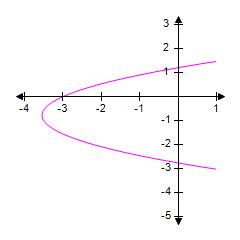
ANSWER: a
6. Draw the graph.

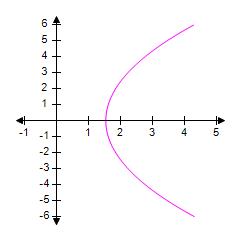


1.10 Solving Eqns and Ineqs Graphically

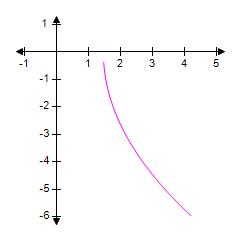
ANSWER: c
7. Draw the graph.



1.10 Solving Eqns and Ineqs Graphically


ANSWER: c
8. Draw the graph.




1.10 Solving Eqns and Ineqs Graphically


ANSWER: a
9. Draw the graph.




1.10 Solving Eqns and Ineqs Graphically


ANSWER: c
10. Draw the graph.


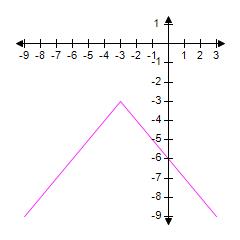

1.10 Solving Eqns and Ineqs Graphically
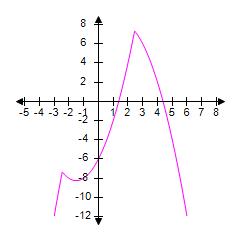
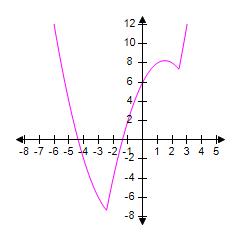
ANSWER: c


11. Graph the circle by solving for y and graphing the two equations corresponding to the negative and positive square roots. (This graph is called a circle.).


1.10
Graphically


ANSWER: b


12. Graph the equation by solving for y and graphing the two equations corresponding to the negative and positive square roots. (This graph is called an ellipse.)


1.10 Solving Eqns and Ineqs Graphically


ANSWER: b

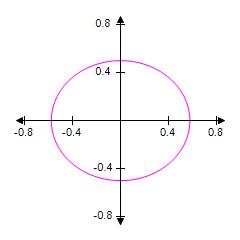
13. Graph the equation by solving for y and graphing the two equations corresponding to the positive and negative square roots. (This graph is called a hyperbola.)


1.10 Solving Eqns and Ineqs Graphically


ANSWER: e
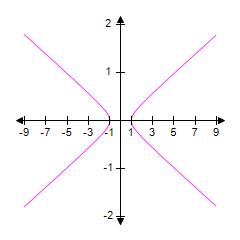


If they intersect, determine the number of points of intersection.
a. 4
b. 0
c. 5
d. 2
e. 1
ANSWER: b

14. Do the graphs of and intersect in the viewing rectangle by [ –1, 3]?

If they intersect, determine the number of points of intersection.
a. 2
b. 0


15. Do the graphs of and intersect in the viewing rectangle by ?
1.10 Solving Eqns and Ineqs Graphically
c. 3
d. 1
e. 6
ANSWER: d
16. Solve the equation both algebraically and graphically.
a. x = –1
b. x = –3
c. x = –2
d. x = –5
e. x = –7
ANSWER: a
17. Solve the equation both algebraically and graphically.

a. x = –2
b. x = –1
c. x = –8
d. x = –10
e. x = –7
ANSWER: c
18. Solve the equation both algebraically and graphically.






ANSWER: c
1.10 Solving Eqns and Ineqs Graphically
19. Solve the equation both algebraically and graphically.

a. x = 6
b. x = –6
c. x = –2
d. x = 1
e. x = –1
ANSWER: b

20. Solve the equation both algebraically and graphically. a.



e.

ANSWER: c

21. Solve the equation both algebraically and graphically. a.





ANSWER: a

22. Solve the equation both algebraically and graphically. a.

1.10 Solving Eqns and Ineqs Graphically



e. ANSWER: b
23. Solve the equation both algebraically and graphically.





e. ANSWER: a


24. Solve the equation both algebraically and graphically. a.





e. ANSWER: c
25. Solve the equation both algebraically and graphically.

1.10 Solving Eqns and Ineqs Graphically





ANSWER: c
26. Solve the equation graphically in the interval [0, 8].
a. x = 4, x = 6
b. x = 4, x = 7
c. x = 4
d. x = 5, x = 7
e. x = 5, x = 6
ANSWER: a


27. Solve the equation graphically in the interval [–1, 8].
a. x = 1.00, x = 4.50, x = 5.00
b. x = 1.00, x = 4.00, x = 5.00
c. x = 3.50, x = 4.50, x = 5.50
d. x = 3.50, x = 4.00, x = 5.00
e. x = 1.00, x = 4.00, x = 5.50
ANSWER: b
28. Solve the equation graphically in the interval [–4, 4].

a. x = –3.00, x = –0.20, x = 0.20
b. x = –3.00, x = –0.33, x = 0.33
c. x = –3.00, x = –0.25, x = 0.25
d. x = –2.00, x = –0.33, x = 0.33
e. x = –2.00, x = –0.20, x = 0.20
ANSWER: e
29. Solve the equation graphically in the interval [–8, 7].

If necessary, round your answer(s) to the nearest hundredth.
1.10 Solving Eqns and Ineqs Graphically
a. x = –2.35
b. x = –2.35, x = 3.35
c. x = 3.37
d. x = 3.35
e. x = –2.37, x = 3.37
ANSWER: c
30. Find all real solutions of the equation

If necessary, round your answer(s) to the nearest hundredth.
a. –2.74, –0.61, 0.61, 2.74
b. –2.74, –0.63, 0.63, 2.74
c. –2.76, –0.63, 0.63, 2.76
d. –2.80, –0.67, 0.67, 2.80
e. –2.76, –0.61, 0.61, 2.76 ANSWER: c
31. Find all real solutions of the equation

If necessary, round your answer(s) to the nearest hundredth.
a. –6.01, 0, 5.01
b. –5.99, 0, 5.01
c. –5.99, 0, 4.99
d. –6.05, 0, 5.05
e. –6.01, 0, 4.99 ANSWER: a


Determine the number of points of intersection. If there are no points of intersection, answer 0 ANSWER: 0

32. Do the graphs of and intersect in the viewing rectangle by [-1, 3]?


Determine the number of points of intersection. If there are no points of intersection, answer 0 ANSWER: 2

33. Do the graphs of and intersect in the viewing rectangle by ?

34. Solve the equation graphically in the interval [–9, 6].
Round your answer to two decimal places.
Copyright Cengage Learning. Powered by Cognero.
1.10 Solving Eqns and Ineqs Graphically
x = ANSWER: 3.54
35. Solve the equation graphically in the interval [0, 5].
x = ANSWER: 2, 3

36. Solve the equation graphically in the interval [ 1, 8].
x = ANSWER: 1, 6, 7


37. Solve the equation graphically in the interval [–4, 4].
x = ANSWER: –2, –0.2, 0.2
38. Find all real solutions of the equation

x = ANSWER: –1.85, –0.77, 0.77, 1.85
Use a graphing calculator to decide which viewing rectangle produces the most appropriate graph of the equation. Match each viewing rectangle below with the letter of the corresponding equation.




39. [–4, 4] by [–4, 40] ANSWER: a
40. [–4, 4] by [–40, 4] ANSWER: b
41. [–4, 40] by [–4, 4] ANSWER: c
42. [–40, 4] by [–4, 4] ANSWER: d
1.10 Solving Eqns and Ineqs Graphically
43. Find all real solutions of the equation

x =
ANSWER: –6.02, 0, 5.02
Use a graphing calculator to decide which viewing rectangle produces the most appropriate graph of the equation. Match each viewing rectangle below with the letter of the corresponding equation.




44. [–10, 10] by [–150, 150] ANSWER: a
45. [–10, 5] by [–20, 80] ANSWER: c
46. [–1, 10] by [–150, 150] ANSWER: b
1.11 Modeling Variation
1. Express the statement as a formula.
t is jointly proportional to the quantities x and y and inversely proportional to r.
Determine if the table is either true or false where c is given as the constant of proportionality.
x y r t c
9 –45 9 45 –1 27 90 –18 270 2 45 –135 27 1,125 5
a. True
b. False
ANSWER: False
2. The cost C of printing a magazine is jointly proportional to the number of pages p in the magazine and the number of magazines printed m. And, for this problem, k is the constant of proportionality.
C($) p m k
9,800 50 2,800 0.07 4,800 120 2,000 0.02 1,180 20 5,900 0.01
Determine if the values in this table are true or false.
a. True
b. False
ANSWER: True
3. Determine the equation that expresses the statement. G varies directly as x.
The symbols a, b, c, and d are constants.
a. G = t × x
b. G = ax 2 + b
c. G = cx
d. G = d
e. G = c / x
ANSWER: c
4. Determine the equation that expresses the statement. F is directly proportional to z.
Symbols a , b , c , and d are constants.
a. F = b
b. F = cz 3 + d
1.11 Modeling Variation
c. F = a
d. F = cz 5 + d
e. F = a z
ANSWER: e
5. Determine the equation that expresses “D is jointly proportional to G and x.” Symbols a , b , c , d , and f are constants.
a. D = dGx 2 + f
b. D = aG + bx
c. D = cGx
d. D = cxGx
e. D = cG
ANSWER: c
6. Determine the equation that expresses “d is proportional to G and inversely proportional to z.” Symbols a , b , and c are constants. a. b.


c. d. e.


ANSWER: a
7. Write an equation that expresses “ y as it varies inversely as R.” The symbols a, b, c, and d are constants. a.



ANSWER: a
8. Write an equation that expresses “G is proportional to the square root of z ” The symbols a, b, c, and d are constants. a.

1.11 Modeling Variation




ANSWER: a
9. Determine the equation that expresses “G is proportional to the square of z and inversely proportional to the cube of d.” Symbols a, b, c, and d are constants.





ANSWER: d
10. Determine the equation expressing the formula “F is jointly proportional to the squares of y and A.” Symbols a, b, c, and d are constants.
a. F = by 2 + A 2
b. F = ay 2 A 2
c. F = cy 2 A + d
d. F = ay 3 A 3
e. F = ay 2 b 2
ANSWER: b
11. Determine the equation that expresses that “R is proportional to k and inversely proportional to B and x.” Symbols a, b, and c are constants.
a.

b.

1.11 Modeling Variation
c. d.


e.

ANSWER: a
12. Express the statement as a formula. y is directly proportional to x.
If x = 6 and y = 36, what is the constant of proportionality?
a. 11
b.
c. 6
d. 10
e. 9
ANSWER: c
13. Express the statement as a formula. M varies directly as x and inversely as y.
If x = 48, y = –8, and M = –6, what is the constant of proportionality?
a. 3
b. 5
c. 1
d. 11
e. 2
ANSWER: c
14. Express the statement as a formula. s is inversely proportional to the square root of t.
If s = 13 and t = 9, what is the constant of proportionality?
a. 39
b. 13
c. 42
d. 1
e. 117
ANSWER: a
1.11 Modeling Variation
15. The pressure P of a sample of gas is directly proportional to the temperature T and inversely proportional to the volume V. 120 L of gas exerts a pressure of 33.7 kPa at a temperature of 300 K (absolute temperature measured on the Kelvin scale).
If the temperature is increased to 500 K and the volume is decreased to 50 L, what is the pressure of the gas?
a. 134.80 kPa
b. 80.88 kPa
c. 124.65 kPa
d. 0.11 kPa
e. 144.80 kPa
ANSWER: a
16. The resistance R of a wire varies directly as its length L and inversely as the square of its diameter d. Find the constant of proportionality K if a wire 1.7 m long and 0.001 m in diameter has a resistance of 17 ohms. Find the resistance R 1 of a wire made of the same material that is 3 m long and has a diameter of 0.005 m.
a. K = 0.00001 ; R 1 = 14.4
b. K = 0.000001 ; R 1 = 0.12
c. K = 0.000001 ; R 1 = 3.98
d. K = 0.00001 ; R 1 = 1.2
e. K = 0.00001 ; R 1 = 0.006
ANSWER: d
17. In the short growing season of the Canadian arctic territory of Nunavut, some gardeners find it possible to grow gigantic cabbages in the midnight sun. Assume that the final size of a cabbage is proportional to the amount of nutrients it receives, and inversely proportional to the number of other cabbages surrounding it. A cabbage that received 25 oz of nutrients and had 10 other cabbages around it grew to 25 lb. What size would it grow to if it received 5 oz of nutrients and had only 5 cabbage neighbors?
a. 9
b. 10
c. 11
d. 12
e. 6
ANSWER: b
18. The value of a building lot on Galiano Island is jointly proportional to its area and the quantity of water produced by a well on the property. A 500 ft by 100 ft lot has a well producing 5 gallons of water per minute, and is valued at $12,000. What is the value of a 300 ft by 300 ft lot if the well on the lot produces 6 gallons of water per minute?
a. $28,468
b. $20,736
c. $27,030
d. $38,880
e. $25,920
1.11 Modeling Variation
ANSWER: e
19. The heat experienced by a hiker at a campfire is proportional to the amount of wood on the fire, and inversely proportional to the cube of his distance from the fire. If he is 19 ft from the fire, and someone doubles the amount of wood burning, approximately how far from the fire would he have to be so that he feels the same heat as before?
a. 24 ft
b. 13 ft
c. 38 ft
d. 90 ft
e. 28.5 ft
ANSWER: a
20. A car is traveling on a curve that forms a circular arc. The force F needed to keep the car from skidding is jointly proportional to the weight w of the car and the square of its speed s, and is inversely proportional to the radius r of the curve. A car weighing 900 lb travels around a curve at 80 mi/h. The next car to round this curve weighs 2,500 lb and requires the same force as the first car to keep from skidding. How fast is the second car traveling?
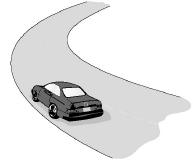
a. 46 mi/h
b. 42 mi/h
c. 44 mi/h
d. 48 mi/h
e. 49 mi/h
ANSWER: d
21. The stopping distance D of a car after the brakes have been applied varies directly as the square of the speed s. A certain car traveling at 54 mi/h can stop in 230 ft. What is the maximum speed it can be traveling if it needs to stop in 170 ft? Please round the answer to the nearest tenth.
a. s = 73.1 mi/h
b. s = 41.4 mi/h
c. s = 62.8 mi/h
d. s = 46.4 mi/h
e. s = 6.3 mi/h
ANSWER: d
22. The power P that can be obtained from a windmill is directly proportional to the cube of the wind speed s Find the
1.11 Modeling Variation
constant of proportionality for a windmill that produces 97 watts of power when the wind is blowing at 23 mi/h. Please round your answer to four decimal places.
a. k = 0.1834 watts·h3/mi3
b. k = 0.0085 watts·h3/mi3
c. k = 0.0070 watts·h3/mi3
d. k = 4.2174 watts·h3/mi3
e. k = 0.0080 watts·h3/mi3
ANSWER: e
23. Express the statement as a formula. y is directly proportional to x.
If x = 11 and y = –33, what is the constant of proportionality?
ANSWER: –3
24. Express the statement as a formula.
M varies directly as x and inversely as y.
If x = –63, y = –7, and M = 18, what is the constant of proportionality?
ANSWER: 2
25. Express the statement as a formula.
s is inversely proportional to the square root of t.
If s = 5 and t = 4, what is the constant of proportionality?
ANSWER: 10
26. In the short growing season of the Canadian arctic territory of Nunavut, some gardeners find it possible to grow gigantic cabbages in the midnight sun. Assume that the final size of a cabbage is proportional to the amount of nutrients it receives, and inversely proportional to the number of other cabbages surrounding it. A cabbage that received 35 oz of nutrients and had 10 other cabbages around it grew to 30 lb. What size would it grow to if it received 17.5 oz of nutrients and had only 5 cabbage neighbors?
Round to the nearest tenth, if necessary.
lbs
ANSWER: 30
27. The value of a building lot on Galiano Island is jointly proportional to its area and the quantity of water produced by a well on the property. A 300 ft by 400 ft lot has a well producing 4 gallons of water per minute, and is valued at $10,000. What is the value of a 800 ft by 800 ft lot if the well on the lot produces 10 gallons of water per minute?
Round to the nearest dollar.
$ ANSWER: 133,333
Copyright Cengage Learning. Powered by Cognero.
1.11 Modeling Variation
28. The stopping distance D of a car after the brakes have been applied varies directly as the square of the speed s. A certain car traveling at 47 mi/h can stop in 245 ft. What is the maximum speed it can be traveling if it needs to stop in 155 ft? Please round the answer to the nearest tenth.
s = mi/h
ANSWER: 37.4
29. The pressure P of a sample of gas is directly proportional to the temperature T and inversely proportional to the volume V
Find the constant of proportionality if 90 L of gas exerts a pressure of 35 kPa at a temperature of 200 K (absolute temperature measured on the Kelvin scale). Round your answer to three decimal places.
k =
If the temperature is increased to 800 K and the volume is decreased to 70 L, what is the pressure of the gas? Round your answer to three decimal places.
P = kPa
ANSWER: 15.750; 180.000
30. Write an equation that expresses the statement.
R varies directly as y.
ANSWER: R = cy
31. Write an equation that expresses the statement.
N is directly proportional to x.
ANSWER: N = cx
32. Write an equation that expresses “ y as it varies inversely as F.” ANSWER:

33. Write an equation that expresses that “G is proportional to the square root of t.” ANSWER:

34. Write an equation that expresses “G is proportional to the square of y and inversely proportional to the cube of B.” ANSWER:

35. Write an equation that expresses “G is jointly proportional to the squares of y and B.” ANSWER:

36. Write an equation that expresses “F is proportional to n and inversely proportional to d and x.” ANSWER:

1.11 Modeling Variation
37. The resistance R of a wire varies directly as its length L and inversely as the square of its diameter d.
Find the constant of proportionality if a wire 1 m long and 0.001 m in diameter has a resistance of 10 ohms.
Next find the resistance of a wire made of the same material that is 3 m long and has a diameter of 0.002 m.
ANSWER: 0.00001,7.5
38. The pressure P of a sample of gas is directly proportional to the temperature T and inversely proportional to the volume V.
Find the constant of proportionality if 110 L of gas exerts a pressure of 30.1 kPa at a temperature of 200 K (absolute temperature measured on the Kelvin scale). Round to three decimal places.
k =
If the temperature is increased to 800 K and the volume is decreased to 70 L, what is the pressure of the gas? Round to three decimal places.
kPa =
ANSWER: 16.555,189.200
The heat experienced by a hiker at a campfire is proportional to the amount of wood on the fire, and inversely proportional to the cube of his distance from the fire. If he is x ft from the fire, and someone doubles the amount of wood burning, how far from the fire would he have to be so that he feels the same heat as before?
Match each new distance below with the letter of the corresponding old distance.
a. x = 15 ft
b. x = 20 ft
c. x = 26 ft
d. x = 30 ft
e. x = 24 ft
39. 30.24 ft
ANSWER: e
40. 18.90 ft
ANSWER: a
41. 37.80 ft
ANSWER: d
42. 25.20 ft
ANSWER: b
43. 32.76 ft
ANSWER: c
